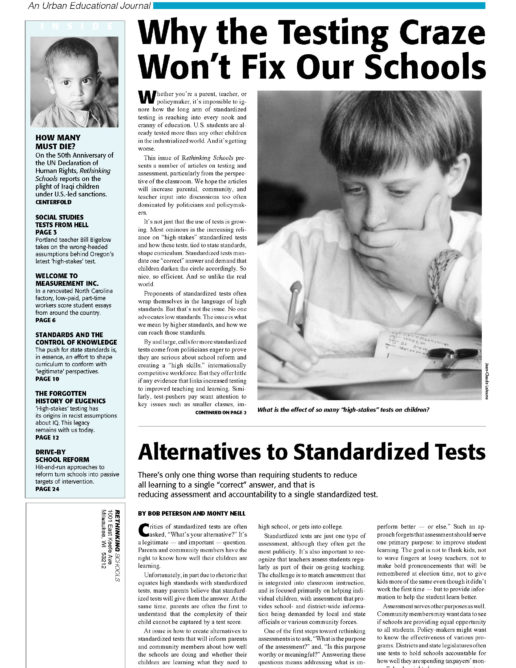Preview of Article:
- Help teachers teach better. Good assessment provides an array of information that teachers can use to improve their teaching practices and help ensure student learning.
- Are integrated with the curriculum and instruction. Assessment works best when it flows naturally from, and is part of, student work — i.e., a science experiment that becomes part of the student portfolio.
- Are classroom based. Most of the information for the assessment is based on classroom work done by students over a period of time.
- Use a variety of measures. Good assessment does not rely on a single yardstick but compiles data based on both individual students’ learning plus schoolwide data such as attendance and graduation rates.

